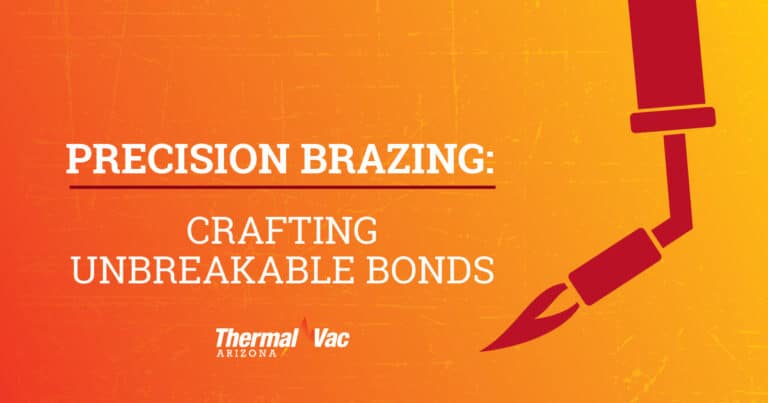To the uninitiated, brazing might seem like the unglamorous cousin of welding. But brazing isn’t child’s play. It’s a science that can be examined at various levels of granularity, from the molecular intricacies to the end result visible to the naked eye. While the process may seem straightforward, achieving perfection in brazing is far from easy.
At the heart of precision brazing lies a fundamental truth: Once you’ve brazed it, you can’t un-braze it. Unlike other construction re-works, there are no undos in brazing. Make a mistake and it’s back to square one with a fresh set of components. Sounds like a delightful way to exhaust your time and budget, right?
Making the Pieces Fit Together Before the Heat is Turned Up
To avoid this costly and time-consuming pitfall, the key is precision, which doesn’t start at the shop but instead at the drawing board with a team of qualified design engineers. From day one, your components need to be engineered with precision. Just how precise depends on several factors: the materials involved, the brazing method that will be used, and the intended end use of the product. Even if you think your project is “forgiving,” you’d better believe there’s no forgiveness when it comes to exacting components.
For instance, those braze filler metals are picky little creatures. They demand precise clearances to work their magic. Your components must also be designed to withstand the rigors of brazing temperatures without warping or distorting. And when exotic materials like Inconel or some other super alloy make an appearance, they require specialized handling, which is best taken into account at the design stage.
But here’s the kicker: Consistent brazing results become elusive when components are engineered in isolation. You need a team of engineers and designers to collaborate with you on how to fine-tune your component design to take into account the project’s unique technical demands. In other words, you need all the pieces of the puzzle to fit together snugly when the heat is turned up.
Three Key Pit Stops in the Race to the Finish
Let’s talk about one of the unsung heroes of quality control in brazing: stop points. These are not mere suggestions; they are the uncelebrated champions that ensure a quality brazed joint doesn’t turn into a catastrophe. Brazing is a hands-on process that requires careful planning and execution down to the smallest detail.
Stop points offer a chance to pause and ensure everything is going according to plan. They’re like pit stops in a race, only with more meticulous inspections and fewer tire changes. At each stop point, several critical tasks are tackled:
- First, a thorough inspection to verify that everything up to that point has gone off without a hitch. Any unexpected distortions, damage, or discoloration must be dealt with promptly.
- Next on the list is a compliance check. Customer specifications are reviewed, ensuring the product is on track to meet their requirements.
- And let’s not forget preventive measures. At every stop point, equipment is prepared for the next leg of the journey, with measures like high-temperature burnouts and leak-up rates to keep things in check.
But here’s where the artistry of stop points truly shines through. They aren’t one-size-fits-all. They’re tailored to the specific needs of each brazing process and where the part is in the process. Take a look at a few examples:
- Receiving: This is where the journey begins. Parts are checked for cleanliness, count, condition, and adherence to tolerances necessary for successful brazing.
- After applying the braze alloy: Before the components are subjected to the searing heat, inspectors ensure the braze alloy has been applied correctly.
- After each thermal cycle: Many brazing processes require multiple thermal cycles. At this point, inspectors review the work so far, ensuring it’s up to snuff. They also check the data about the thermal cycle itself, making sure it performed as expected.
- Final inspection: The Grand Prix, where every minute detail is scrutinized to ensure the brazed joint meets the customer’s criteria. Techniques like helium leak, radiographic, and ultrasonic testing are deployed to verify the joint is void-free.
Stop points are not just a nice-to-have; they are essential standards, especially in industries like aviation, space, and defense, where precision is paramount. Because, when it comes to brazing, there’s no room for error. It’s not just the right way to do it. Here at Thermal-Vac Arizona, it’s the only way we do it.
